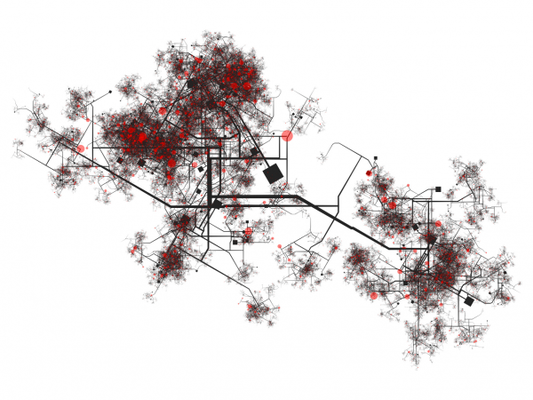
Contact tracing is the process of identifying people (i.e. “contacts”) who may have come into contact with an infected person. By tracing down contacts, testing them for infection, treating those who have been infected and tracing their contacts in turn, the spread of disease can be reduced.
Contact tracers are the people who perform the contact tracing functions.
Contact tracing is a core disease control measure which has been employed for decades. It is commonly performed for vaccine-preventable diseases such as measles, sexually transmitted diseases such as HIV, and of course novel infections such as severe acute respiratory syndrome coronavirus 2 (SARS-CoV-2), more commonly known as coronavirus or COVID-19.
Contact tracing aims to:
The CDC considers contact tracing a key strategy for preventing further spread of COVID-19. Absent containment measures, every infected person will on average infect two or three others. The US will require at least 30 contact tracers for every 100,000 people (more than 98,000 people nationwide) to keep COVID-19 at a manageable level.
There is increasing evidence that people with minimal or no symptoms are a major vector of the disease. Data collected by the WHO suggests that 80% of infections are mild or asymptomatic, and people are most infectious before and within five days of the onset of symptoms.
This underscores the critical importance of contact tracing. The very goal is to identify people who don’t know they’re infected and encourage them to self-quarantine before they unwittingly infect others. Contact tracers need to move incredibly fast to get to people before they’re already spreading the virus.
Estimates suggest that the US will need to conduct 900,000 coronavirus tests per day to capture all asymptomatic coronavirus cases, but the daily average is currently about a third of that level, according to the COVID Tracking Project.
If areas can build the capacity to test all close contacts of infected people, it could more than double the effectiveness of contact tracing programs.
A number of companies are developing proximity-tracking apps to aid contact tracing efforts. One high profile example is the joint effort between Apple and Google, which are mobilizing huge teams to build a system which will notify people of potential exposure.
But whether these apps will make a difference still remains a question. It’s unlikely that contact tracing apps or hardware will be legally required. An April Washington Post–University of Maryland poll found that 3 in 5 Americans are either unable or unwilling to use Apple/Google’s infection-alert system, suggesting that it might be difficult to persuade enough people to use the app to make it effective against the coronavirus pandemic.
There’s also the fact that millions of people don’t own smartphones, including many older people considered more at risk from the disease. The Post-Maryland poll indicates that about one in six Americans don’t have smartphones, and that number goes up to 47% for people 65 and older.
Another potential concern is the sheer number of contact tracing apps. People who download one app may not receive warnings when someone who has downloaded a competing app exposes them to the virus. And it’s still unknown whether the apps will be accurate enough to do more good than harm.
Besides, there are many public locations and workplaces where cellphones aren’t permitted, making them ineffective at tracking exposure.
One Oxford University study estimated that in a city of 1 million people, it would take 60% of the population installing a proximity-tracking app to shut down the epidemic, although lower levels of use could still make a difference.
No matter how well they work, proximity-tracking apps must be used in conjunction with human-driven contact tracing. Ultimately, the technology is still unproven.
As of this writing at least 45 states are at least partially lifting stay-at-home orders, even though the CDC says the US is still in the acceleration phase of the pandemic, and many regions’ caseloads continue to rise.
If communities are unable to effectively quarantine patients and ensure that their contacts can self-isolate as well, rapid community spread of COVID-19 is likely to increase to the point that enforced social distancing will again be needed to contain the virus.
The success of contact tracing will depend on how many contact tracers are performing the work, how many new cases develop, and how readily people respond in any given community.
The original version of this page was published at: https://www.paubox.com/blog/contact-tracing/
Paubox Marketing is an email marketing platform built for healthcare. Our solution allows healthcare organizations to securely send PHI in marketing emails to drive more engagement and grow busines... Read more
At our recent virtual healthcare cybersecurity conference, Paubox SECURE @ Home, Hoala Greevy, Paubox’s founder and CEO, and Nick Wong, software developer at Paubox, discussed ...read more
Digital transformation in healthcare refers to the positive impact of technology in the healthcare field.Technological innovation can be used to streamline physician’s workflows, ...read more
The Secretary of the U.S. Department of Health and Human Services (HHS) has issued a limited waiver of HIPAA sanctions and penalties due to the nationwide public health emergency caused ...read more
The HIPAA Privacy Rule regulates how patients’ protected health information (PHI) can be used for marketing. In general, HIPAA requires written authorization before a covered ...read more